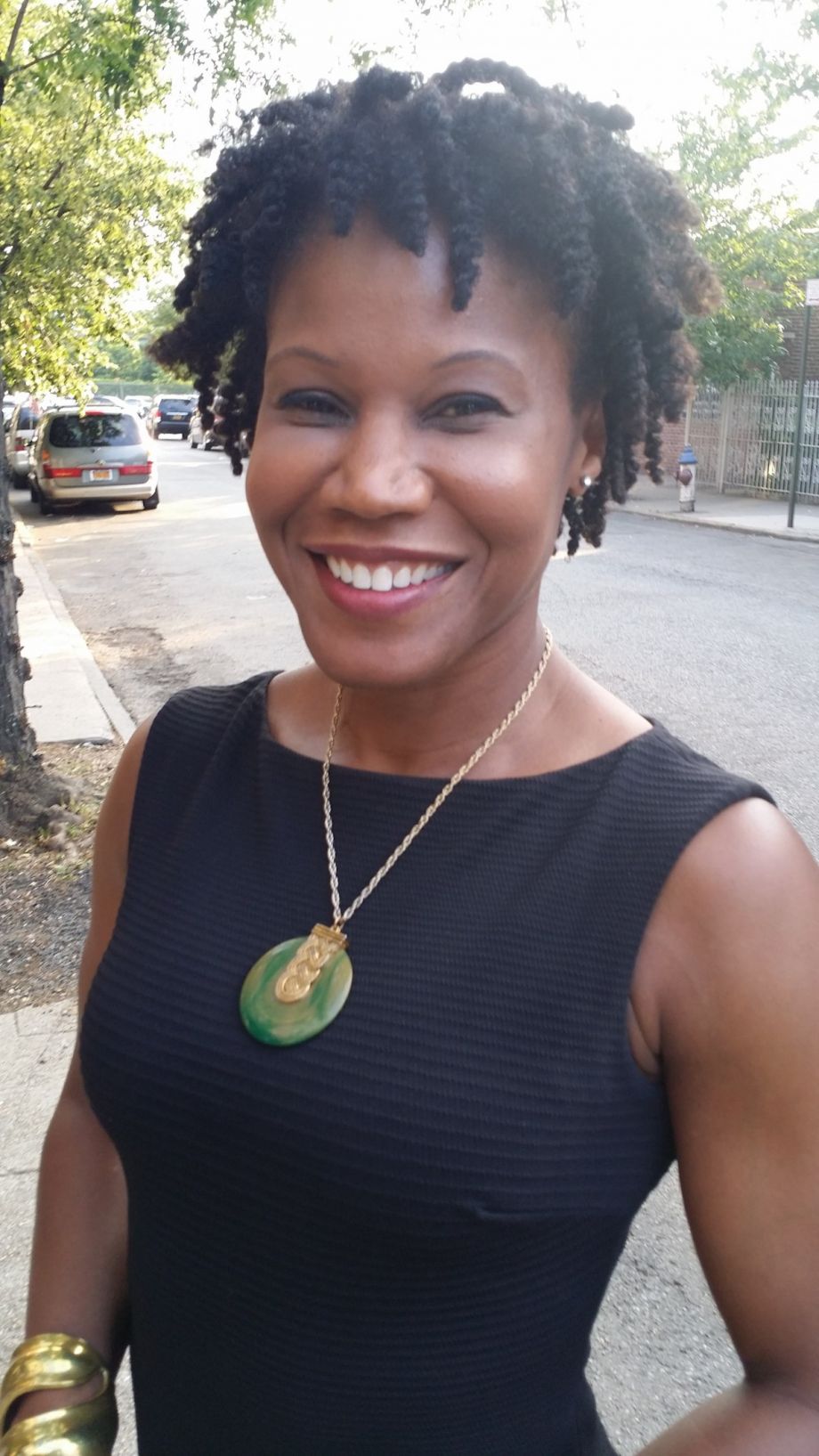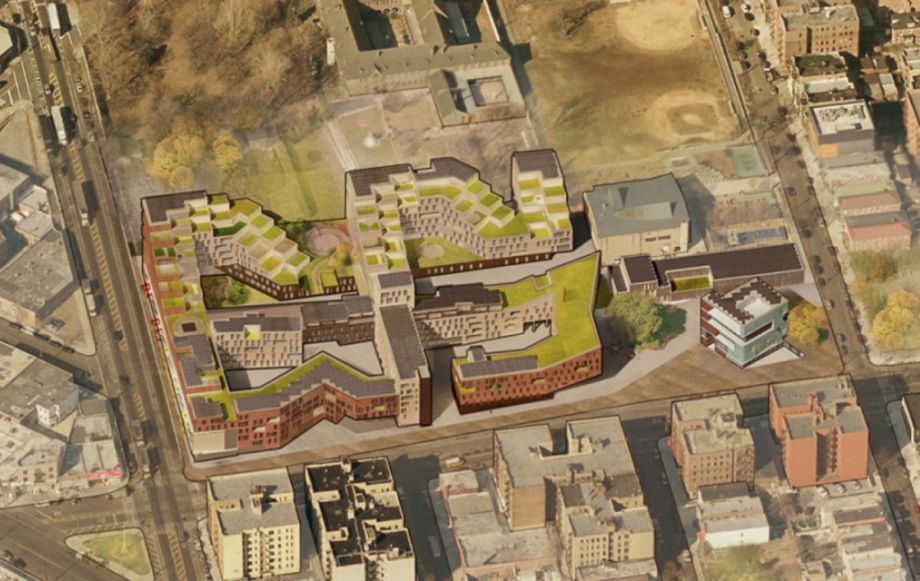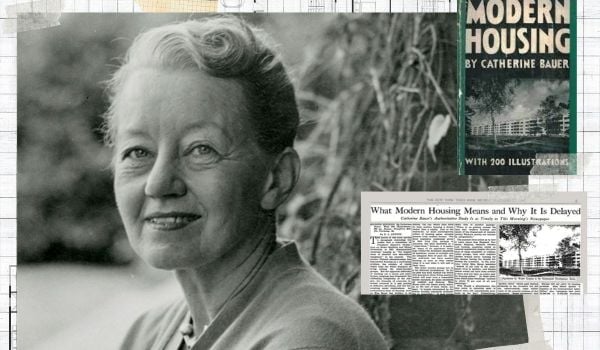Majora Carter’s father worked as a janitor there. Hundreds of thousands of young New Yorkers were held there in dim, vermin-infested cells with no air conditioning. The Bronx fought it and finally after decades of protest and planning, the Spofford Detention Center for juveniles in Hunts Points is shuttered and being reimagined as a place not of pain, but of opportunity.
“There were 100 percent negative associations with the place,” says urban revitalization strategist Carter, who grew up down the block. “Parents would lord the Youth House, as we called it, over the kids as a place they would go if they were bad. At the same time, it was understood that it was not a good place for kids.” Her father worked there in the ‘60s and ‘70s.
Spofford was shut down by the city in 2011 after decades of complaints and legal skirmishes over brutal conditions and abuse of the facility’s underage charges. Around that time, Carter was formulating ideas about how to combine economic drivers with housing in neighborhoods that desperately need both. “I literally looked down the street from my house and thought, ‘Oh my gosh, that site is big enough to play out this model for real estate development that would have a social, environmental and economic transformational effect that I would like to see happen.’” Today, there are no concrete plans for the five-acre, city-owned site but a cleanup is underway, and Carter has a reputation for strong-arming her enterprising ideas into city-backed reality.
She spurred the development of Hunts Point Riverside Park and acted as executive director of Sustainable South Bronx for seven years. As a private consultant, Carter works with communities across the country on sustainable development projects. Now she is working with Hunts Points residents to envision how the site could best serve their community. Low-income neighborhoods have, after all, historically been burdened with buildings and infrastructure NIMBY’d away from other neighborhoods, but if communities are empowered, they can direct transformation of such architecture.

Majora Carter (Source: The Majora Carter Group)
The property is currently owned by NYC’s Administration for Children’s Services. Carter believes that for the site to be primed for redevelopment, it would have to be transferred over to the Department of Housing Preservation & Development (HPD). The Majora Carter Group worked with architecture firm Perkins and Will to pitch the idea during Michael Bloomberg’s administration, but the mayoral change left the project in limbo. Mayor Bill De Blasio hasn’t yet spoken publicly about the site, but creating housing and economic opportunities in low-income areas like Hunts Points is a priority of his administration.
While waiting for HPD to make a move on the site, Carter has been keeping the excitement about the project up. This year, she teamed up with architectural software company Autodesk for a Re-Design Competition and asked architecture students to design high-performance, socially responsible buildings. Carter is now prepping for an Open Ideas competition similar to the one that helped launch NYC’s High Line park, admiring what she calls their “holistic and engaging approach.”
The ongoing environmental cleanup happening at the site has revealed that, unlike the High Line, it’s unlikely that the existing building could be preserved in whole. “At first I was excited about the possibility of historic preservation,” says Carter, “that we could take this thing that was such a monster on the face of the community — and the way that it embodies this position on our psyche — and transform it physically to something else. That was so exciting. But the reality of the situation was ‘maybe not.’
“I don’t ever want to get away from the history of that site,” she continues, “And I think that there are many different ways to interpret and exhibit that through architecture and design. I’m not sure how we will do it, but I’m sure that it will be done. I have no interest in erasing that part of our history. I’m really excited about the possibility of creatively addressing those things.”
On September 16th, an exhibit of the winners of the Spofford Re-Design Competition was held at Carter’s tech incubator, StartUp Box. One of the attendees was Yusef Salaam, one of the “Central Park Five” wrongly accused of assaulting a Central Park jogger in 1989. The first place that Salaam was taken after his arrest was the Spofford Juvenile Center.
Carter trepidatiously approached Salaam, as he was looking over the entries, and asked, “Could you imagine?”
She says he looked down at the rendering and then back at her, and said, “It’s time.” Carter says, “I just thought to myself, I’m going to do my best to make sure that it is time.”
The Equity Factor is made possible with the support of the Surdna Foundation.

Alexis Stephens was Next City’s 2014-2015 equitable cities fellow. She’s written about housing, pop culture, global music subcultures, and more for publications like Shelterforce, Rolling Stone, SPIN, and MTV Iggy. She has a B.A. in urban studies from Barnard College and an M.S. in historic preservation from the University of Pennsylvania.

















